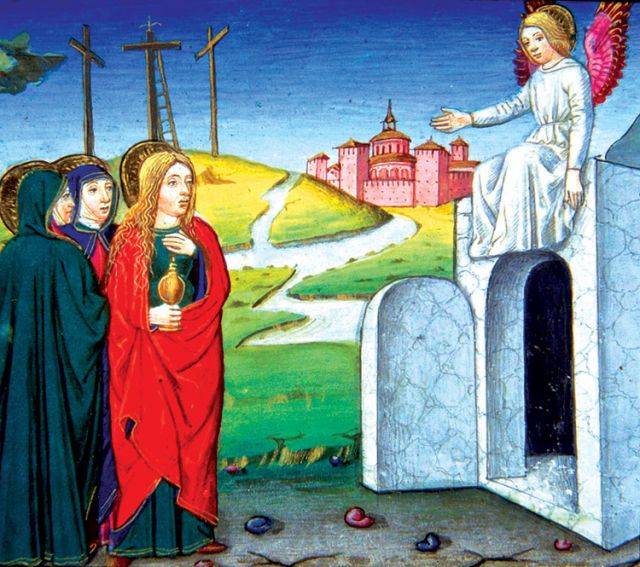Franciscan Father Kevin Lynch of Mount St. Francis Retreat Centre near Cochrane, Alta., muses, “A metaphor to me is bread dough. It has to sit before it rises.”
Lynch, who lives in the country, compares Holy Saturday to “a land that lays fallow in winter and yet it is producing. We don’t have to see what is going on. Be still and know that I am God.”
The Franciscan looks back in time, saying, “There is an old writer from the early Church that says even hell trembles during that silence. We are in-between time. Everything is happening, yet nothing appears to be happening.”
Lynch remembers Jesus’ spiritual heritage, saying, “Jesus, His Jewish body, has to rest on the Sabbath. He fulfills all the laws and the prophets. In the stillness something bigger is happening. Like Jonah and the whale it is maybe three days before He can go back and do His work.”
He points out that the text itself tells of the women watching and waiting. “The newly hewn tomb has been compared to the temporality of a womb. A sense of fertility comes from quietness or waiting or expectation.”
Lynch “always finds it a day of waiting or stillness. It’s a life’s passage. At some point, it is time to leave.” Franciscan Father David Norman of Newman Theological College in Edmonton goes on to explain, “Holy Saturday represents the day when Christ is dead. It’s a day of basic silence, contemplation, just reflecting on Good Friday. It is not a day where we do much mainly because it represents the time that Christ is in the tomb and that Christ is in solidarity with human death.”
East and West have a different “understanding of Holy Saturday or the descent of Christ to Sheol (the Hebraic term) or Hades (the Greek term),” said Norman. For the Eastern Church, Christ’s going to the dead “has been understood as Christ’s triumphal entry in the place of the dead where Christ preaches to the spirits in prison” (1 Peter 3.18-19). The Eastern Church understood it as “the overcoming of death, and Christ, by undergoing death, has overcome it, sharing in the death of Adam and everyone who exists after Adam. This is the opportunity for those who are dead to be released from the bonds of death and share in Christ’s resurrection.”
The Western Church understands it differently.
“The Western Church has seen Holy Saturday as Christ experiencing with us what it means to be dead, what it means to be in a sense alienated from God, the source of life,” said Norman. “Thomas Aquinas saw it as Christ descended into hell so hell is what Christ has experienced in death. But those at the farthest reaches of hell don’t get any benefit from what Christ has experienced. Christ just does not take on our human death and experience our human death. He, in a sense, experiences sin in the singular. He overcomes the alienation that sin represents. He overcomes it in His descent into hell.
“So, all that being said, Holy Saturday is God’s affair and it is a powerful symbol of how God is willing to go to the furthest reaches of alienation from God to overcome that alienation from within.”
Norman noted that hell then becomes part of the Christ event. He explains, “It becomes part of the way of full union of God. Jesus does not avoid hell, but He in a sense sets the boundaries for hell. He goes to the furthest reaches that one could possibly go and be alienated or separated from God. And by doing that, He has overcome all alienation. All separation. Therefore the possibility for salvation is open to every creature.”
Fr. Tom Talentino, the priest in residence at Edmonton’s Marian Centre, finds Holy Saturday to be “a time of expectant waiting, waiting to celebrate the great gift of God’s love that comes to us through the passion and resurrection of Jesus Christ.” He points out that “All during Lent we have been preparing our hearts to do these things. We are now in the final hours of preparation time.”
To do this, the Marian Centre tries to observe a certain amount of silence.
“The silence is so we can enter into the fullness of the celebration of resurrection, live the gift of the Resurrection,” said Talentino. “We try to silence our hearts and minds, keep focused so we can treasure that time. It becomes a very holy time of expectant waiting.”
(Western Catholic Reporter)

